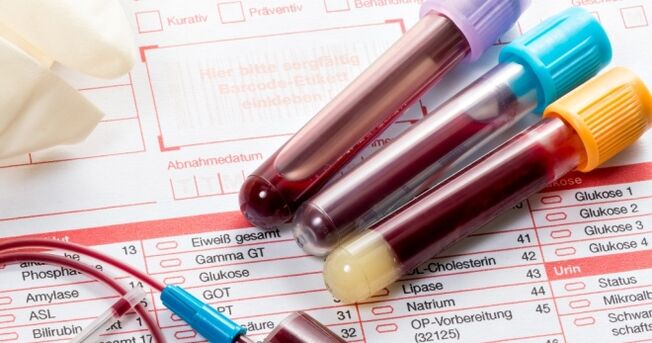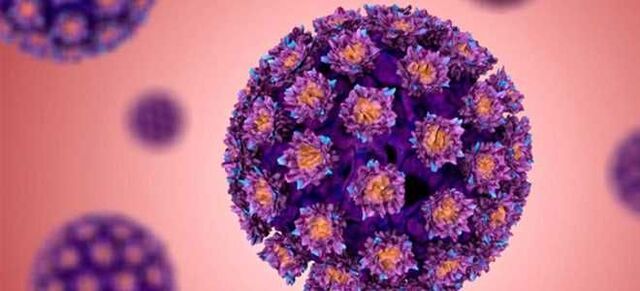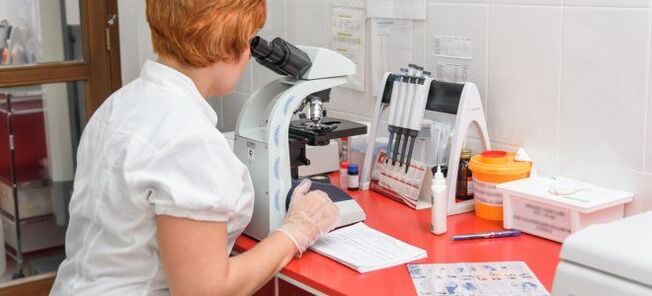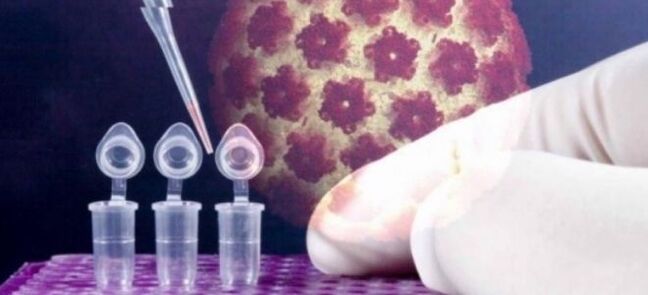
If symptoms and signs of illness are present, physicians prescribe multiple laboratory tests to confirm the criteria and make a diagnosis. In the list of times, patients can find an HPV diagnosis: what it is, why and when it is prescribed - not everyone can answer.
What is HPV?
Human papillomavirus, HPV, is a complete group of viral infectious diseases that are widespread. Scientists know more than 100 species of this virus and not all of them are dangerous to humans. Most are imperceptibly present in the body for a long time and cause migration. However, about 14 species of this virus are carcinogenic - they cause the development of malignancies. When diagnosing, doctors always consider the type of HPV, the carcinogenic effect, which determines the further course of action and the nature of the treatment.
Human papillomavirus - species
The papilloma virus is usually divided into types according to the risk of developing cancer. Taking this factor into account, there are three main groups of HPV:
- Not carcinogenic- never cause the development of malignant tumors.
- Small carcinogenic risk- may, under certain circumstances, cause the development of cancer: 6, 11, 42, 43, 44.
- High carcinogenic risk- when infected with these types of HPV, it is difficult to avoid the development of malignancies. Carcinogenic human papillomavirus: 16, 18, 31, 35, 33, 45, 58, 59, 52.

How is human papillomavirus transmitted?
Knowing how papillomavirus is transmitted can reduce the risk of infection. In practice, however, it is difficult to avoid this. In the vast majority of cases, infection occurs when sexual activity begins: sexual intercourse is the main route of transmission of the virus. Its removal can also be performed during a kiss, when there are small cracks and scratches on the surface of the lips. You can also get infected if you break hygiene rules when visiting public places:
- sauna;
- swimming pool:
- baths;
- and also when using someone else's toothbrush, towel, razor.
Infection can also occur when the baby goes through the mother's infected pathways at birth. Experts do not rule out the possibility of contact with the virus: it is unstable, but it can maintain some activity.Among the factors that cause HPV infection:
- early sex;
- large number of sexual partners;
- sexually transmitted diseases;
- impaired immunity.
Human papillomavirus - symptoms
Human papillomavirus can be invisibly present in the body for a long time. The gestation period, according to experts, can last from 2 months to 2 years. The disease persists insignificantly: there are no clinical signs and the main diagnostic methods show the norm. Every third patient, thanks to the immune system, recovers within 6-12 months from the moment of infection.
Clinic for HPV damage to the body reduces the appearance of skin lesions. Patients notice papillomas, warts and condylomas on their skin. Their location can vary and corresponds to the place where the virus enters the body: genitals, surface of the hands, lips. These formations look like papillary outgrowths, sometimes resembling cauliflower. The outgrowths are painless, but with friction and injury they can cause pain and bleeding.

Why do I need to take an HPV test?
Having told about the virus, let's move on to information about the HPV diagnosis: what kind of research it is, how it is performed and in what cases it is prescribed. To begin with, we note that if human papillomavirus is suspected, the diagnosis will help to confirm or refute the assumptions. Research of this kind has the following objectives:
- identification of high carcinogenic HPV;
- confirmation / denial of the persistent activity of a particular type of HPV;
- assessment of the risk of cancer in patients with cervical dysplasia.
In addition to the mentioned reasons for the study, the HPV diagnosis (what it is - indicated above) can be shown in the following cases:
- Primary screening for cervical cancer in women over 30 years of age.
- Evaluation of the results of surgery performed on the epithelial tumor.
- Doubtful results of a cellular study of gynecological diseases.
What test should I take for HPV?
There are several methods to determine the presence of the papilloma virus in the body. However, in most cases, doctors resort to PCR. If it is necessary to pass a diagnosis of HPV, patients go straight to this examination. Various biological body fluids can be used as material for examination:
- blood;
- urine;
- amniotic fluid (in the diagnosis of a disease during pregnancy).
Speaking of HPV diagnosis, what it is and how it is performed, it is necessary to consider the possibility of studying tissue material. So, during a colonoscopy, your doctor carefully examines the lining of the cervix. The presence of small papillomas on them is a direct indication of HPV damage to the body. For confirmation, a small piece of tissue is examined under a microscope to rule out a malignant disease.
HPV diagnostic methods
HPV diagnosis is a set of measures aimed at preventing the presence of the virus and determining its type. The following methods are used for this purpose:
- Digene test- modern accurate method. With its help, the strength of the virus in the body, its type and carcinogenic effects can be determined. Materials for research are scraping from the mucous membrane of the urethra or vagina. It is often used in combination with cytology.
- PCR analysis of HPV- a simple and cost-effective diagnostic method that is widespread. The substance used is the patient's blood or urine. Analysis of viral DNA traces is assumed in the sample.
- Cell research- examination of the stroke under a microscope. The assessment criterion is the presence of altered cells in the stroke - dyskeratocytes and coilocytes.
- Diagnosis of HPV antibodies- helps to detect viral infection in the early stages. The disadvantage is that the strength and type of virus can not be determined.
- Histological examination - examination of a sample of infected tissue to determine the type of HPV and its carcinogenic effects.

Human Papillomavirus - How To Test It?
For examination, even during the referral, doctors tell the patient in detail how the HPV test is taken in a particular case. Depending on the methods and test materials used, the analytical algorithm may differ. It is important to prepare for research. Proper implementation of all points in the preparatory measures allows you to obtain objective results of the analysis and eliminate the need for repeated implementation.
Preparation for HPV diagnosis
For the diagnosis of HPV, the patient must meet several conditions. In this case, the survey method and the type of material to be analyzed are of crucial importance. It is represented by:
- blood;
- urine;
- vaginal or urinary retention.
Depending on the type of biological fluid being studied, the patient will be advised on how to prepare for the diagnosis the day before. The task of the examinee is to follow the preparation rules in full. This will avoid getting false results, and in some cases false positives, when the result indicates that HPV is present in its absence.
HPV blood test
When talking about how the HPV test is taken, it should be noted that in most cases, the patient's blood is used for this purpose. The study is performed on an empty stomach: 10-12 hours before the scheduled time of ingestion, the patient must not eat; as a drink you can use ordinary water without gas. 2-3 days before the day of diagnosis, it is forbidden to consume alcoholic beverages, fatty foods and junk food. Only in this case, a blood HPV diagnosis will allow you to get accurate test results.
HPV stroke analysis
This method is more often used to look at the fair sex. Before women are tested for HPV, they are prepared for this test. The doctor introduces the patient in detail all the rules of preparation.In this process, you can highlight the following important points:
- Stroke is taken before starting antibiotics or 2, 5 weeks after stopping treatment.
- On the day of sampling, it is not permitted to make toilets on the external genitalia with hygienic products.
- It is forbidden to shower, go into vaginal styles.
- One day before taking the substance, you must avoid sexual intercourse.
- It is ideal to take a diagnosis in the middle of a cycle, it is forbidden to do an ovulation test.

Decoding HPV diagnosis
Only a doctor can correctly determine the results of an HPV test. The specialist assesses not only the quantitative value of the evidence, but also the clinical picture, possible signs of infection. Getting an overview of what is happening helps to choose the right medicine and choose effective treatment methods. At the same time, it is important to take into account the severity of timely diagnosis and treatment: with the age of the patient, the risk of developing a malignant tumor increases.
Quantitative HPV diagnosis
When a HPV test is performed with a quantitative diagnosis, decoding involves determining the concentration of the virus at the time of the study. This helps to determine the correct methods of patient management. Real-time PCR (RT-PCR) measures the amount of HPV DNA in a test sample. This is necessary for constant vigorous monitoring of a particular type of human papillomavirus.
However, even those who know about the HPV diagnosis, what it is and how it is performed, can not independently determine the results. This needs to be done in conjunction with a patient study and other studies. In the evaluation, experts follow the following interpretation of the evidence:
- lg< 3- the risk of getting dysplasia is low;
- lg 3-5- clinically significant result, risk of cervical dysplasia;
- lg >5- high risk of dysplasia, possibly the early stage of the disease.
Qualitative HPV diagnosis
HPV diagnosis of high carcinogenic risk is performed using this technology. Helps identify 16th and 18th types of HPV. These types of viruses often cause genital cancer in women and squamous cell carcinoma, genital warts and cervical disorders. The efficiency of HPV DNA reaches 98%. The result indicates an answer with an indication of each type of virus. There are two possible outcomes: found / not found.















































































